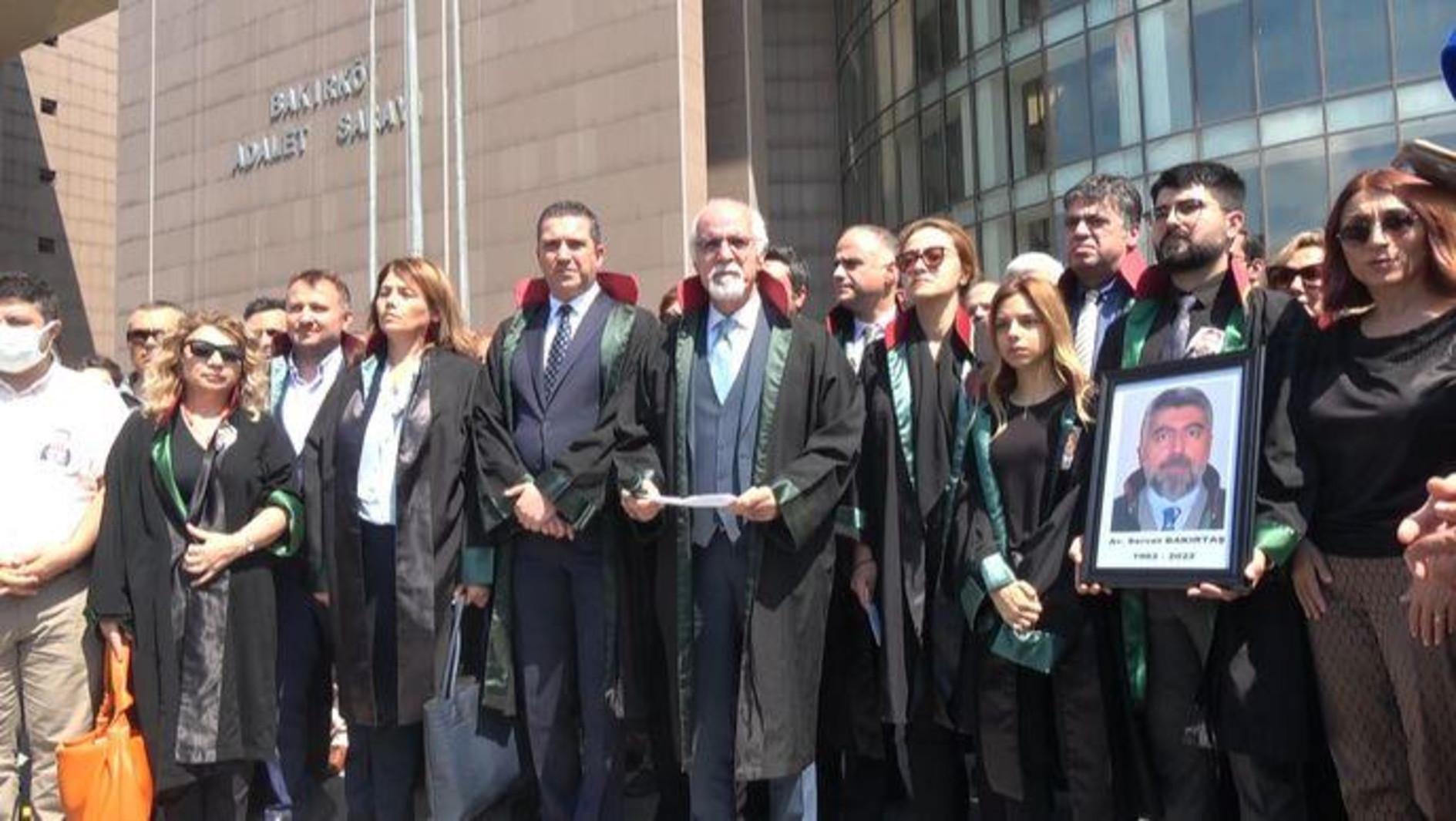Turkey should focus on quake risk management: Professor
Barçın Yinanç - ISTANBUL

Turkey has done a lot since a major earthquake in 1999 in terms of disaster management, but the focus must be on taking measures before earthquakes strike, according to a prominent geologist.
“In the current mentality we seem to say: ‘Let the earthquake happen, we will quickly heal the wounds.’ This is an outdated approach,” Professor Naci Görür has told the Hürriyet Daily News.
“Scientists are talking about the size of the threat and the expected damage, and they are also predicting some kind of timing. So, the right approach would be to take measures to minimize the damage.”
You had predicted three months ago that an earthquake can take place around the eastern province of Elazığ. An earthquake of 6.8 magnitude hit the town of Sivrice in Elazığ on Jan. 25. What should we expect next?
Geology can define risky areas through different methodologies. One of them is the recurrence interval. Every fault creates earthquakes of the same magnitude with certain intervals, some in every 100 years, some in every 60 years. The last major earthquakes on the East Anatolian Fault took place around Elazığ in 1874 and 1875. I had already warned in 2005 that we could expect an earthquake in this region after more than 140 years of silence.
There are two main faults in Turkey; one is the East Anatolian and the other is the North Anatolian. The latter released its stress through successive earthquakes in the 20th century: in 1939, 1942, 1944, 1957, 1967 and finally Gölcük earthquake in 1999 [when more than 17,000 people lost their lives]. Starting from Erzincan in the east, there has been a westward progressing sequence of large earthquakes, coming all the way to Gölcük and therefore reaching the doorstep of Istanbul.
In contrast to this activity in the North Anatolian Fault, not much was happening in the East Anatolian Fault.
Currently our concern is whether East Anatolian Fault will follow the same pattern with the North. In other words, there could be a series of earthquakes.
The economic situation of locals living near the East Anatolian Fault is worse than the ones living in the North Anatolia Fault zone. Also, due to the cultural characteristic of the region, there is a weak building stock. Most houses are made of mud brick.
Basically you are anticipating a pattern similar to that with the North Anatolian Fault.
But we have another reason to be concerned. When there is a rupture in a fault it releases part of the energy, but at the same time, part of the energy is transferred to its right or left. We have seen the same in North Anatolia Fault. Following the earthquake in Gölcük we warned that there had been a stress transfer towards Düzce and İstanbul. Indeed, we had an earthquake in Düzce a month later. And ever since 1999 we have been warning that a large earthquake is knocking at Istanbul’s door.
Do you think that since 1999 we seem to have been concentrated too much on a possible earthquake in İstanbul, neglecting the rest of the country?
But Istanbul is important, because had İstanbul not been under earthquake risk, I do not think the state would have paid so much attention to the issue. I don’t think the earthquake issue would have been so popularized.
In the past when an earthquake happened in the east, we would speak about it for a few days and then forget about it. But when Istanbul facing the risk of a major earthquake was the turning point. Turkey started to take to the matter seriously only when we realized that Istanbul was at risk.
Also, Istanbul is the lifeblood of Turkey. The Marmara Region harbors 60 percent of Turkish industry. If, in terms of economy, İstanbul is brought to its knees by an earthquake, Turkey will be brought to its knees.
What do you think about what has been done since 1999 in terms of preparedness?
We started like a Turk but we could not finish like a Turk. In 1999 we said nothing would be like before. We started very fast: Disaster management centers were set up in every municipality, emergency road systems were established, safe assembly points were formed. Bridges and roads were checked. Fire departments were reinforced, search and rescue teams were trained. A lot has been done in terms of disaster management. But not much has been done in terms of risk management.
In the current mentality we seem to say: “Let the earthquake happen; we will not leave anyone in the cold after it happens, we will quickly heal the wounds.” This is an outdated approach. Scientists are talking about the size of the threat and the expected damage, and they are also predicting some kind of timing. So, the right approach would be to take measures to minimize the damage.
I cannot say nothing is done. But what has been done is really minimal in comparison to what needs to be done.
What is the risk for İstanbul?
Istanbul is at risk of experiencing an earthquake of at least 7.2 on the Richter scale magnitude. Parsons and his team [Tom Parsons from the United States Geological Survey] put forward a work in 2000 based on the build-up of stress as well as the past occurrence of earthquakes, and said that Istanbul will suffer an earthquake within 30 years starting anytime from the one which took place in 1999. According to their estimations, the probability for a large earthquake for Istanbul was 15 percent within the first 10 years, 50 percent within 20 years and 60 percent within 30 years. We are at the last 10 years period.
What is İstanbul’s greatest vulnerability?
Its building stock. The ground on the Anatolian side is strong but that is not the case with the European side. We have very bad settlements on such a bad ground. According to official figures, 60 percent of the constructions have not seen serious engineering service. Some buildings are collapsing even in the absence of an earthquake. You start to dig for a new construction and you see the adjacent buildings collapsing.
Construction and population density are two factors that increase the risk in earthquakes. I believe the infrastructure is vulnerable as well. Istanbul got bigger in the absence of urban planning.
How about the works that started under the name urban transformation?
That was not undertaken in the right way. The focus was not based on earthquake but on getting profits. The engine of the transformation was left to the hands of the contractors. When the state did not do any supervision and monitoring, the contractors went to do the transformation wherever it was profitable.
The problem is not limited to İstanbul, due to its tectonic characteristic 90 percent of the country happens to be an earthquake zone. That means major earthquakes can happen anywhere in Turkey. Whatever needs to be done in Istanbul should be done everywhere else in Turkey. Urban transformation is the gist of risk management, but we approached urban transformation as a construction project.
Unfortunately, local authorities have cold feet to be realistic and to give information to people based on scientific data. And sometimes people are interesting as well. They don’t want you to tell you where the risky areas are because they think this will diminish the value of their houses. But, as scientists, we don’t care about profits, what is essential is human life.
Who is Navi Görür?
*Professor Naci Görür is a 1971 graduate of Geology Engineering Department of Istanbul Technical University (İTÜ), where he is currently giving lectures.
*An expert on sedimentology and marine geology, Görür made several researches on Turkey’s sedimentary zones and led projects to reveal earthquake potential of the Marmara Sea after the 1999 earthquake.
*He was elected as a member to the Turkish Academy of Sciences (TÜBA) in 1997 and received NATO science award in 2004. He has held several positions in the Scientific and Technological Research Council of Turkey (TÜBİTAK), the last one being the head of the Marmara Research Center, between 2000 and 2003. He was also the recipient of the TÜBİTAK Science and Ancentive Award in 1983.
















